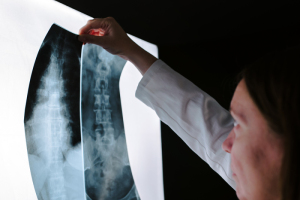por
Lauren Dubinsky, Senior Reporter | March 16, 2018

Less female radiologists are
publishing research
A team of researchers at the University of Maryland School of Medicine discovered that less research is being published by female radiologists.
Dr. Erin O’Connor, assistant professor at the university and lead author of the study, attributes this to a decrease in female radiology faculty and trainees.
“There are not as many female mentors in radiology,” she told HCB News. “A lot of times medical students pick a specialty when they find someone that they identify with. I think gender certainly plays a role in that.”



Ad Statistics
Times Displayed: 107315
Times Visited: 6555 MIT labs, experts in Multi-Vendor component level repair of: MRI Coils, RF amplifiers, Gradient Amplifiers Contrast Media Injectors. System repairs, sub-assembly repairs, component level repairs, refurbish/calibrate. info@mitlabsusa.com/+1 (305) 470-8013
For the study, which was recently published in
Academic Radiology, O’Connor and her team focused on studies published in
Radiology and the
American Journal of Radiology between 1970 and 2016. They specifically looked at the gender of the first, corresponding, and last authors.
From 1970 to 2016, first authorship among females in
Radiology increased 31 percent and the number of female senior authors increased 16.5 percent. In addition, female corresponding authors increased 16.5 percent from 1980 to 2016.
In
AJR, there was a 32.2 percent increase in first female authors, 24.3 percent increase in female corresponding authors and 13.5 increase in senior female authors from 1970 to 2016.
However, after 2000 the rate of increase in female first and corresponding authorship decreased by 47 percent. But the proportion of female last authorship did continue to increase.
O’Connor said that female medical students may decide not to enter the radiology field because of the perception that it doesn’t involve patient contact. However, there are opportunities for patient contact in mammography, pediatric radiology and interventional radiology.
In order to reverse this trend, O’Connor thinks there needs to be more female role models and mentors within radiology to portray it as a female-friendly specialty. Also, patient contact and career growth opportunities need to be emphasized.

